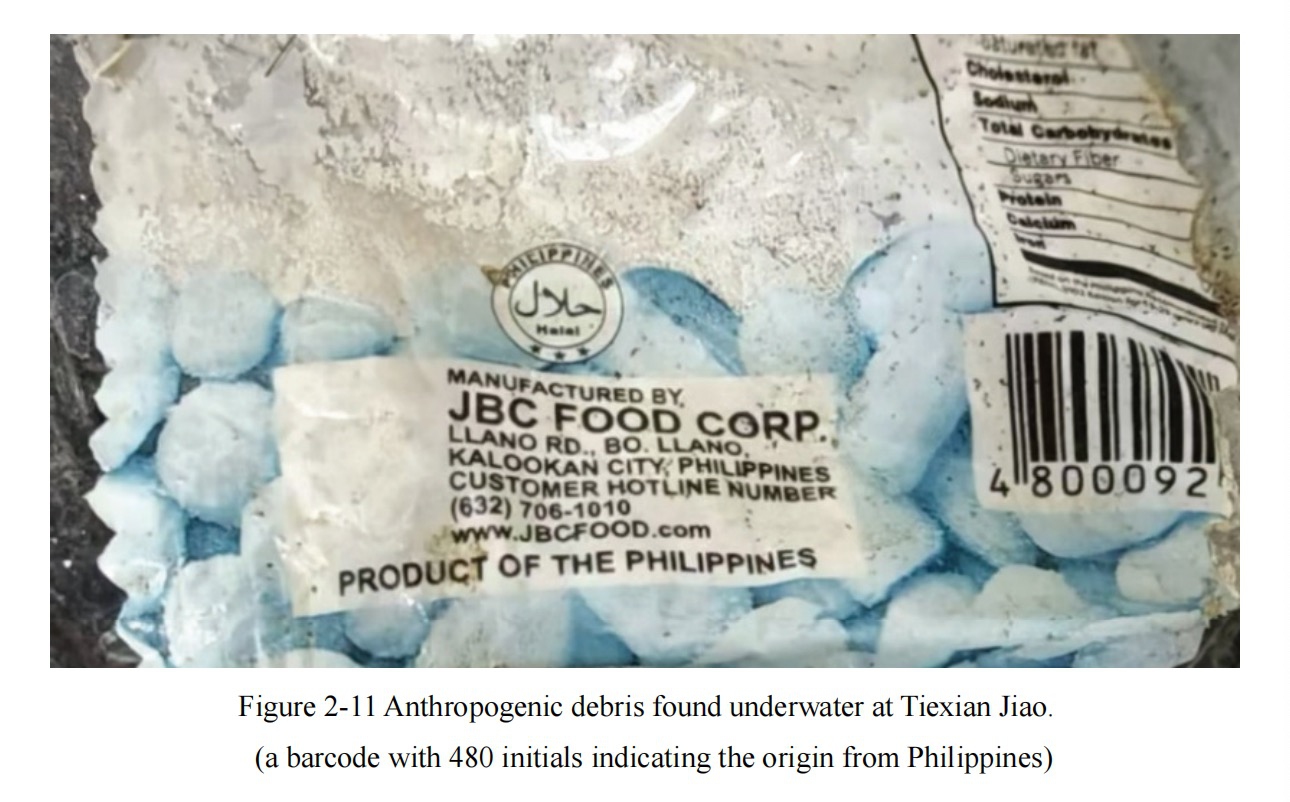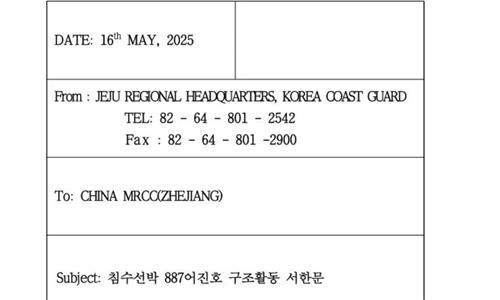Official report reveals damage to S.China Sea ecosystems from Philippine illegal actions and debunks allegations against China

Picture from the report of China's Ministry of Natural Resources
A report released by the Ministry of Natural Resources on Friday indicates that the coverage areas of reef-building corals on the reef flats of Tiexian Jiao and Niu'e Jiao in the South China Sea have both decreased, and the reduction in the coverage area of Tiexian Jiao is significantly greater than that of Niu'e Jiao. Investigative evidence suggests that natural factors, such as the outbreak of crown-of-thorns starfish, along with human-induced environmental damage from illegal fishing activities by the Philippines, are key contributors to this decline.
The report also indicates that, when considering the natural formation of the coral systems in the two reefs and the natural development of the three existing sandbars on the reef flats, there is clear evidence disproving the allegations made by the Philippines that China is dumping coral debris on Tiexian Jiao as well as the rumors propagated by certain countries suggesting that the formation of the reef sandbars is a result of China's "land reclamation." Such assertions lack any scientific or factual basis.
Based on satellite remote sensing and on-site investigation data, this report comprehensively and systematically evaluates the status of the coral reef ecosystems of Tiexian Jiao and Niu'e Jiao for the first time, and scientifically and accurately analyzes the development and formation process of the sandbars of these two reefs, as well as the main factors leading to the degradation of the coral reef ecosystem of Tiexian Jiao.
Specifically, from 2016 to 2024, the coverage area of reef-building corals on the atoll reef flat where Tiexian Jiao is located has been continuously decreasing, with a decline of about 68.9 percent.

Picture from the report of China's Ministry of Natural Resources
During the investigation, Chinese scientific researchers discovered traces and physical evidence of illegal fishing operations by foreign fishing boats from the Philippines and other countries in the waters of Tiexian Jiao without permission, as well as illegal construction activities on China's Zhongye Dao in the South China Sea. The scientific researchers found man-made discarded items such as fishing lines, fishing nets, plastic packaging, iron cans and glass bottles at the relevant investigation stations. Some of these items were marked with Filipino language and some were labeled as produced in the Philippines, the ministry said at a press conference of the report release on Friday.

Picture from the report of China's Ministry of Natural Resources
The report states that the Philippines has arranged for hundreds of people to stay illegally on Zhongye Dao for a long time and has continuously carried out construction activities since 2018.These illegal activities have seriously undermined China's territorial sovereignty. Additionally, these activities, along with the associated discharge of domestic and industrial sewage, will harm the coral reef ecosystems of Zhongye Dao, Tiexian Jiao and the surrounding sea areas. The on-site investigation also found that the coverage rate of reef-building corals at the investigation stations near Zhongye Dao is lower than that at other stations, according to the report.
The report clearly indicates that the outbreak of crown-of-thorns starfish is one of the main factors contributing to the serious degradation of the coral reef ecosystem at Tiexian Jiao. Tropical cyclone attacks and frequent human activities, especially the continuous construction activities by the Philippines on Zhongye Dao, are also important factors affecting the health of the coral reef ecosystem at Tiexian Jiao.

Picture from the report of China's Ministry of Natural Resources
With the further increase in sea surface temperature under the background of global climate change, the islands and reefs in the Nansha Qundao, including Tiexian Jiao and Niu'e Jiao, are facing the risk of large-scale coral bleaching, which is a natural influencing factor.
The coral reef ecosystem of Niu'e Jiao is generally healthy, with a high coverage rate of reef-building corals and a relatively rich variety of coral reef fish. Tridacna, a precious and protected organism, was found at 75.0 percent of the stations. However, the coral reefs are also under the stress of factors such as seasonal sporadic thermal bleaching.

Picture from the report of China's Ministry of Natural Resources
From 2016 to 2024, the coverage of reef-building corals on Niu'e Jiao's reef flat declined slowly. The coral ecosystem faces stress from seasonal thermal bleaching and human activities, with bleaching observed at all stations. Fishing vessel activities have been detected in the surrounding waters, and human-made debris such as fishing lines and nets have been found at relevant investigation sites.
As global sea surface temperatures continue to rise due to climate change, the world is experiencing its fourth mass coral bleaching event, with significant heat bleaching risks facing global reefs, including the Nansha Qundao. However, coral bleaching does not equate to death; when thermal stress alleviates, corals can recover and grow, Xiong Xiaofei a senior engineer at the South China Sea Ecological Center, Ministry of Natural Resources, told the Global Times at the press conference.
The report also points out that there are currently three sandbars on the reef flat of Tiexian Jiao and one sandbar on the reef flat of Niu'e Jiao. They are all naturally formed. They are exposed above the sea surface at high tide and are approximately 1.34 meters, 1.14 meters, 1.10 meters and 1.47 meters above the local average high-tide level of spring tides, respectively. The four sandbars exhibit significant natural characteristics, and their positions and shapes show regular changes.
Their development and formation have sufficient material sources and are normal natural geographical phenomena. This clearly refutes the slanderous remarks made by some countries, such as the claim that the formation of the sandbars on the islands and reefs is due to China's "land reclamation," according to the report.
Cao Yonggang, a senior engineer at the Ministry of Natural Resources, who participated in on-site investigations, responded to a question at the press conference regarding Philippine reports alleging that China dumped coral debris on Tiexian Jiao and whether this was related to the formation of sandbars in the area. He noted that according to historical survey data from China dating back to 1987, the coverage rate of branched reef-building corals in the Nansha Qundao was once relatively high. These corals grow rapidly but are easily damaged by external forces. Under the influence of hydrodynamic forces, the broken and dead branched corals create debris, which provides a natural material basis for the development of sandbars on the islands and reefs in the Nansha Islands, including those at Tiexian Jiao, he noted.
In addition, our investigations demonstrate that both coral debris and sandbar sediments share significant characteristics indicating a common origin, with no external input, which is sufficient evidence to conclude that they were formed naturally rather than through human intervention, Cao stressed.
Wei Zheng, an official and also a researcher at the Ministry of Natural Resources, stated at the press conference that China places great importance on the protection and restoration of coral reef ecosystems. In June 2024, the ministry issued a notice to strengthen coral reef protection and restoration, outlining clear requirements for current and future efforts and emphasizing the principle of natural recovery.
During field investigations, Chinese researchers found numerous human-made debris in the Tiexian Jiao area, indicating the need for scientifically sound management measures to regulate human activities in surrounding waters, said Wei.
The report serves as a reminder that genuine environmental protection actions are needed, rather than actions disguised as environmentalism that lead to encroachment, Chen Xiangmiao, director of the World Navy Research Center at the National Institute for South China Sea Studies, told the Global Times.
The scholar emphasized that joint protection and cooperation are essential for the environmental conservation of the South China Sea.




